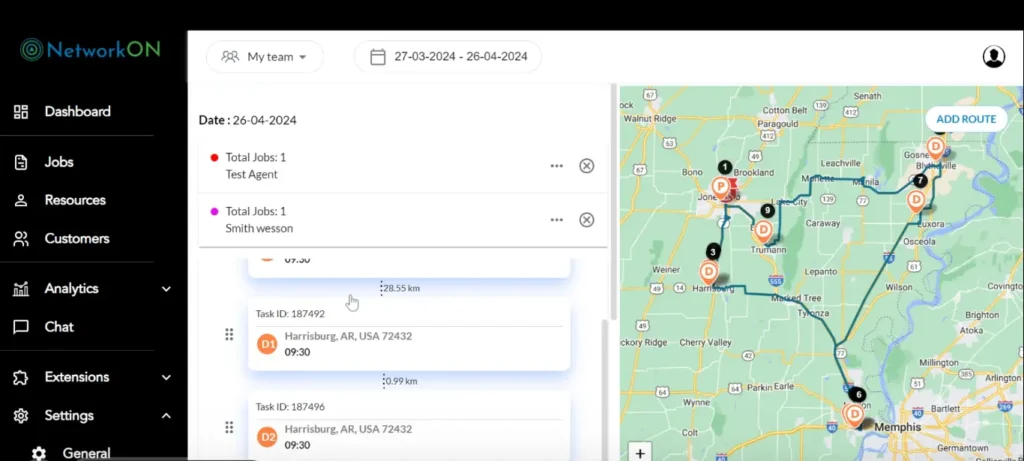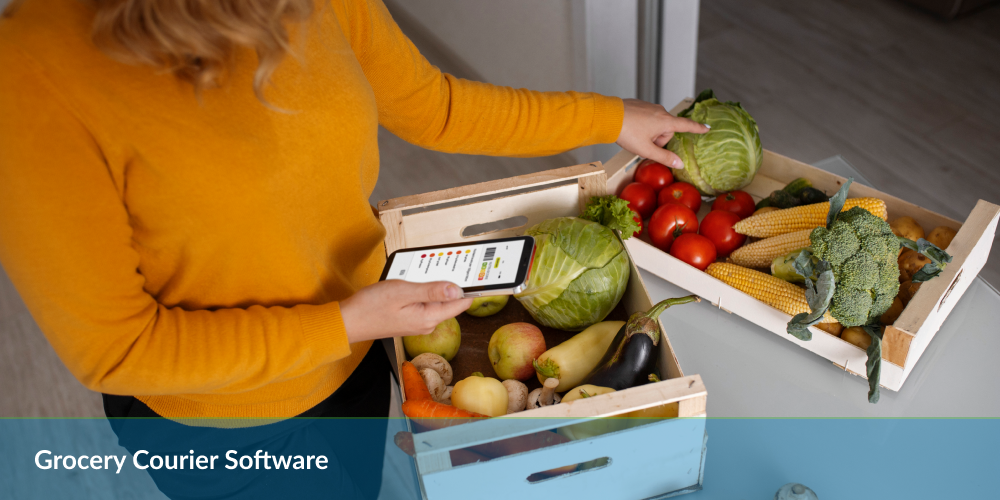Table of Contents
With the advent of real-time tracking software for delivery, gaining instant visibility into your delivery operations no longer remains an unreachable goal. Businesses looking to optimize their delivery process now harness the power of these robust systems to ensure every parcel reaches its destination efficiently. Tracking software is pivotal in meeting and exceeding customer expectations by forging a transparency-driven approach that fosters trustworthiness.

With real-time tracking software for delivery at your fingertips, proactively managing any unexpected issues in the delivery chain becomes a streamlined effort, reducing downtime and improving overall service quality.
Enhance Your Customer’s Experience with Delivery Tracking
Real-time tracking software for delivery equips customers with the power of self-service. By providing access to tracking information, customers no longer need to contact customer support for updates. This autonomy saves both parties time and fosters a sense of control and transparency for the customer.
Automation with real-time visibility significantly reduces the volume of customer service calls. Customers can access the information they require directly, diminishing the need for intermediary assistance. This shift can lead to a substantial reduction in support overhead for businesses.
Real-time tracking software for delivery ensures that the estimated arrival time is precise, which enhances the service’s reliability. Accurate forecasts for delivery enable customers to plan accordingly, leading to a more cohesive and trustworthy customer experience.
Empowering Customers
- Self-service tracking features let customers monitor their order’s journey in real time.
- Advanced delivery tracking platforms offer intuitive interfaces for ease of use.
Streamlining Communication
- Proactive delivery status updates via email or SMS keep customers informed without additional action required on their part.
- Interactive maps and expected delivery windows enhance the visual experience and set realistic expectations.
Enhancing Precision and Reliability
- Dynamic rerouting capabilities informed by real-time conditions optimize delivery schedules.
- Machine learning algorithms predict and communicate potential delays, mitigating customer frustration.
Through the judicious use of delivery real-time tracking software, businesses can deliver a seamless and responsive customer experience that creates loyalty and promotes customer retention.
Integration of Real-Time Tracking Systems with Existing Logistics Software
Seamless integration of delivery Real-Time Tracking Software with existing logistics software streamlines management processes. The workflow remains uninterrupted when a tracking solution is introduced to a pre-existing system. This approach ensures that the improvements become a part of the daily routine without imposing a learning curve or period of adjustment for staff members.
Upgrading capabilities by integrating real-time tracking does not entail overhauling current operations. The aim is to build upon and enhance the existing setup without causing delays or downtime. Companies achieve this by selecting software that completes existing tools, ensuring continuity and stability through the transition phase.
Real-time tracking systems offer improved operational oversight through enhanced data flow between software components. Access to new data points and better visibility into delivery statuses enables companies to make well-informed decisions. Leveraging this data flow results in a comprehensive overview, fostering an environment for continuous improvement in logistics management.
The Role of GPS and IoT in Real-Time Delivery Tracking
Global Positioning System (GPS) technology forms the backbone for delivery tracking, allowing precise location tracking of delivery vehicles. This geo-location data becomes pivotal for fleet managers to monitor routes and estimated time of arrivals. GPS devices in delivery vehicles communicate coordinates to central tracking systems through satellites, enabling users to view real-time location data.
Meanwhile, the Internet of Things (IoT) revolutionizes how this information is collected and transmitted. Sensors and connected devices gather copious amounts of data beyond simple location coordinates; they track speed, engine health, fuel consumption, and temperature conditions for transported goods. IoT devices transmit this information in real time to central systems, ensuring immediate data analysis and decision-making.
Telematics, an interdisciplinary field encompassing telecommunications, vehicular technologies, road transportation, and electrical engineering, contributes significantly to delivery performance and safety. Advanced telematics systems utilize GPS and IoT data to optimize routing, conserve fuel, and enhance driver and cargo safety. By integrating comprehensive telematics data, companies can fine-tune their operational efficiencies and reduce risk factors associated with delivery.
- Explore how geofencing and real-time alerts are key in managing delivery exceptions and contingencies.
- Understand the seamless functionality between driver, vehicle, and dispatch through the interplay of GPS and IoT devices.
- Anticipate how sensor-based data can predict potential vehicle malfunctions, enabling proactive maintenance and minimizing downtime.
Real-Time Tracking Data Analytics for Optimizing Delivery Operations
Delivery Real-Time Tracking Software’s data analytics transforms delivery operations. Organizations gain insights into delivery patterns, enhancing route planning. Logistics networks’ efficiency escalates when analytics tools process vast amounts of tracking data to identify optimal paths, reduce bottlenecks, and improve overall transportation strategies.
Companies reduce delays by leveraging analytics. Data collected from real-time tracking software is employed to analyze delivery performance comprehensively. Delivery schedules are optimized based on trends, patterns, and historical data, ensuring goods reach their destinations expediently.
Predictive analytics, a cornerstone of advanced delivery operations, anticipates logistical challenges before they materialize. This proactive approach utilizes historical data alongside algorithms to forecast potential delays, vehicle maintenance needs, and other operational risks. The outcome is a robust delivery system that preemptively addresses issues, streamlining the delivery process.
- Delivery patterns inform the deployment of vehicles, leading to a marked reduction in idle time and fuel consumption.
- Data-driven insights allow dynamic rerouting to avoid congestion and delays, resulting in timely deliveries.
- Utilizing machine learning models in predictive analytics predicts demand surges and prepares logistics to meet customer expectations.
Analytical tools not only predict outcomes but also generate actionable recommendations. With real-time visibility, both dispatchers and drivers respond swiftly to changing conditions. Advanced data analytics software empowers decision-makers with the information needed to streamline operations and reduce overheads, making a competitive difference in today’s logistics landscape.
Ensuring Security and Privacy in Real-Time Delivery Tracking
With the rising reliance on real-time tracking software for delivery, safeguarding sensitive data is a non-negotiable mandate. Delivery tracking solutions are fortified with robust security protocols to prevent unauthorized data breaches. Data encryption is the bedrock of these security measures, ensuring that information is only accessible to authorized entities.
Providers of delivery tracking software strive for equilibrium, offering customers transparency while respecting their right to privacy. Customers can track their deliveries with ease, yet their data remains protected by sophisticated security measures.
Adherence to regulatory frameworks governing data handling and tracking is requisite for delivering tracking software. Regulations like the EU’s General Data Protection Regulation (GDPR) and various national laws necessitate rigorous compliance. Software developers must stay abreast of these regulations to ensure that their solutions meet the highest standards for security and privacy.
Unveiling the Financial Upsides of Delivery Tracking Solutions
Delivery of real-time tracking software for delivery reduces operational expenditures by curtailing fuel consumption, optimizing routes, and minimizing vehicle idle time. Efficiency surges, while unnecessary costs plummet due to automation and enhanced route planning. These savings directly impact the bottom line for businesses relying on delivery operations.
Return on investment (ROI) accrues notably from improved dispatching efficiency and heightened customer retention rates. Businesses witness their investment in tracking technology pay off as customer satisfaction strengthens due to transparent delivery processes. Furthermore, consistent positive delivery experiences result in repeat business, solidifying the customer base.
Over time, tracking solutions contribute to a pronounced decline in late or failed deliveries. Enhanced delivery performance leads to fewer customer service confrontations and potential refunds or compensations—the cumulative effect compounds into substantial long-term cost savings.
- Enhanced dispatch efficiency reduces costs associated with labor and vehicle maintenance.
- Diminished fuel expenses follow the adoption of analytics-informed routes.
- Higher customer retention rates reduce the expenses associated with acquiring new customers, as retention is generally acknowledged to be more cost-effective than acquisition.
Analytics derived from real-time delivery tracking equip businesses with actionable insights that refine delivery operations continually. These incremental improvements solidify the foundation for sustainable growth, underpinned by an effective delivery system.
Emerging Innovations in Delivery Real-Time Tracking
Emerging technologies redefine the framework for delivering real-time tracking software. Artificial Intelligence (AI) and Machine Learning (ML) refine predictive algorithms, leading to unparalleled precision in estimated delivery times. Advanced analytics harness large datasets, paving the way for enhanced operational efficiency and route optimization. Concurrently, trends indicate a surge in adopting autonomous delivery vehicles, leveraging real-time tracking technologies to operate securely and efficiently.
Blockchain technology promises a breakthrough in transparency and trust. Encrypted transaction records ensure that every delivery process is verifiable and tamper-proof. This integration sustains confidence among stakeholders and elevates the integrity of delivery services.
- Drone delivery services are on the verge of becoming mainstream, propelled by real-time tracking for air-based logistics.
- Dynamic routing algorithms will soon adapt to real-time traffic conditions, weather updates, and unexpected delays.
Augmented Reality (AR) interfaces are also being tried to revolutionize how dispatchers and recipients interact with tracking information. Through AR, intricate delivery data becomes easily comprehensible, enhancing the end-user experience.
The convergence of 5G technology with real-time tracking systems ensures prompt data transmission rates and powering instantaneous updates and communication. Companies adopting cutting-edge technologies will maintain competitive leverage in this evolving landscape by offering reliable and transparent delivery services.
Anticipation of customer needs continues to drive innovation. Sensors capable of monitoring package conditions report in real-time, assuring clients of their package’s integrity throughout the journey. Additionally, personalized delivery options powered by AI predict and adapt to customer availability, integrating seamlessly with users’ increasingly digital lifestyles.
Key Takeaways
Enhanced Customer Experience: Self-service tracking reduces support calls and builds transparency.
Operational Efficiency: Integration with existing software improves workflow and data management.
Advanced Technologies: GPS and IoT enable precise tracking and comprehensive data delivery.
Security and Privacy: Strong security protocols and compliance ensure data protection.
Financial Benefits: Optimized routes and reduced costs enhance ROI and customer retention.
Conclusion
Transportation and courier companies leverage delivery real-time tracking software to streamline their operations and provide exceptional service. Enhanced tracking solutions furnish an unparalleled competitive edge, optimizing the delivery process from start to finish. Businesses employing these advanced systems save on costs and enhance customer experience and satisfaction.
Reflect on the transformational potential of real-time tracking within your company. Would implementing or enhancing your current system place you at the forefront of logistical efficiency? Could refined tracking capabilities be the difference between leading the market and merely keeping pace?
Elevate your operational acumen with NetworkON’s next-generation delivery real-time tracking software. Start redefining your business potential today!
For more information, contact us at sales@networkon.io.
Frequently Asked Questions
How does the delivery of real-time tracking software improve operational efficiency?
Real-time tracking software provides:
Instant visibility into delivery operations.
Enabling optimized route planning.
Reduced downtime.
Proactive management of unexpected issues.
Can real-time tracking software be integrated with existing logistics systems?
Yes, delivery real-time tracking software can seamlessly integrate with existing logistics systems, ensuring a smooth workflow without imposing a learning curve or adjustment period for staff.
How does real-time tracking enhance the customer experience?
Real-time tracking allows customers to monitor their deliveries, receive proactive updates, and plan accurately with precise estimated arrival times, fostering transparency and trust.
What security measures are in place to protect data in real-time tracking software?
Delivery real-time tracking software employs robust security protocols, including data encryption and compliance with regulations like GDPR, to ensure that sensitive information remains protected and accessible only to authorized entities.




0 Conversations